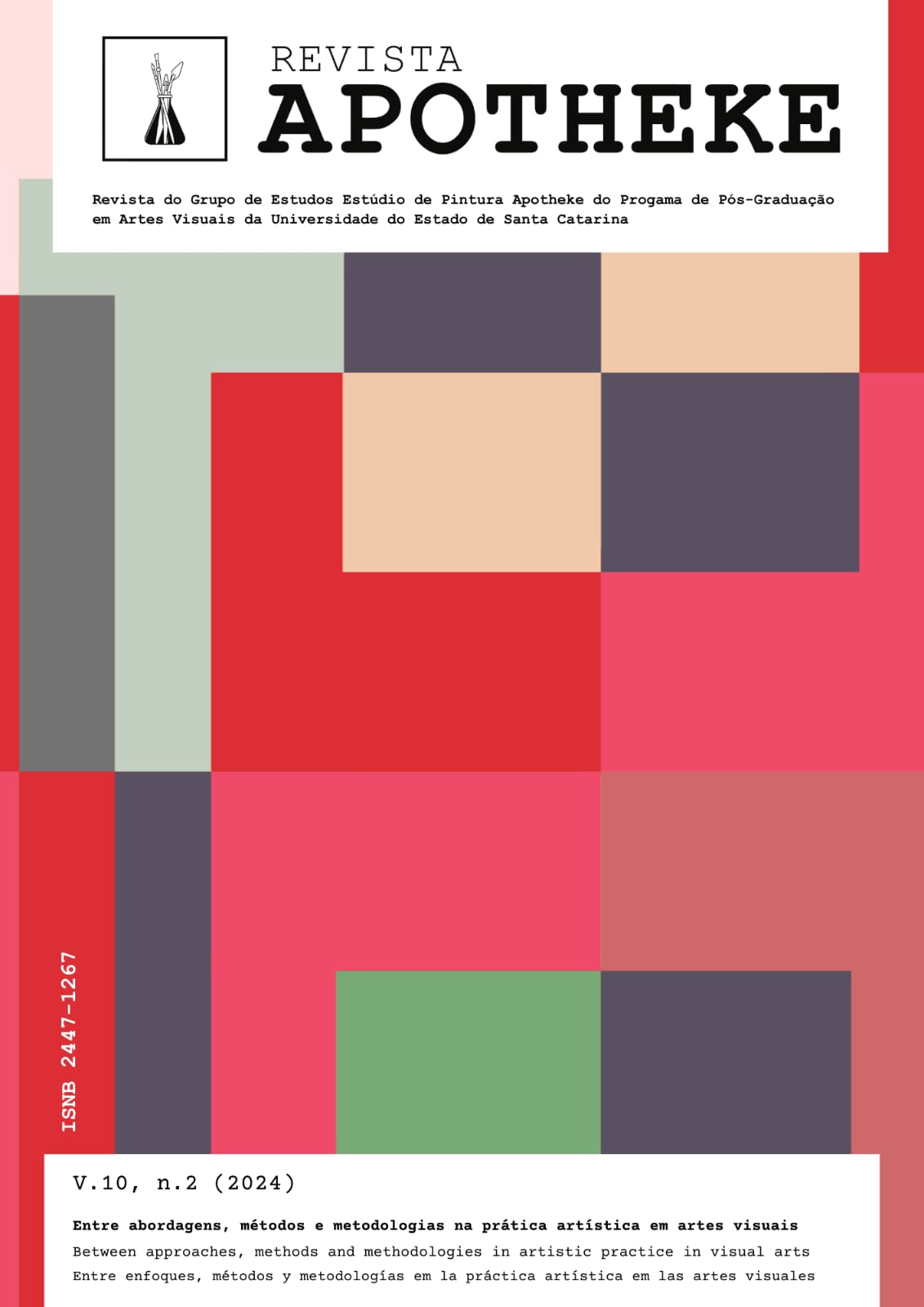#QuadrosDiscentes: Pesquisa sobre memes e arte na formação docente no Brasil e na España
DOI:
https://doi.org/10.5965/244712671022024111Palavras-chave:
memes da internet, linguagens líquidas, formação de professor, ensino de arte, ciberculturaResumo
Neste artigo refletimos e apresentamos os resultados de parte de um projeto de pesquisa que realizamos no ano letivo 2019-2020 com alunos da Dupla Licenciatura em Educação Infantil e Primária da Universidade de Girona - UdG (Catalunha, Espanha) e alunos do Curso de Licenciatura em Artes Visuais da Universidade do Estado de Santa Catarina - UDESC (Brasil), sobre memes da Internet e suas estratégias linguísticas. Para aproximar os dois campos de estudo e facilitar a colaboração, foi utilizado um grupo fechado dentro da rede social Facebook como espaço de interação entre os sujeitos da pesquisa. Os pesquisadores participaram da experiência, de acordo com os protocolos do método de pesquisa-ação. Os resultados apontam para reflexões e possíveis modificações que poderiam ser introduzidas em novas pesquisas sobre como aprender e ensinar sobre imagens voláteis – típicas da cibercultura – em processos educativos para formação de professores.
Downloads
Referências
BAUMAN, Z. Modernidade líquida. Rio de Janeiro: Zahar, 2001.
DAWKINS, R. El gen egoísta. Barcelona: Labor, 1979.
GIL, A. C. Métodos e técnicas de pesquisa social. São Paulo: Atlas, 2009.
HEYLIGHER, F. Evolution of Memes on the Network: from chain-letters to the global brain. In: Fischer, I. Ars Electronica Catalogue. Vienna/New York: Springer, 1996
MARCADÉ, J.C. K. S Malévich, du “Quadrilatère noir”(1913) au “Blanc sur Blanc”(1917). De l’eclipse des objets à la liberation de l’espace. Lausanne: L’Age d’Homme, 1993.
MARCONI, M. A.; LAKATOS, E. M. Metodologia Científica. São Paulo: Atlas, 2010.
PINTO, L. G. A. Una aproximación al fenómeno de los memes en Internet: claves para su comprensión y su posible integración pedagógica. 2015. 12(33). In: Comunicação mídia e consumo. São Paulo: ESPM-SP, 2015,109-131p. Disponível em: http://revistacmc.espm.br/index.php/revistacmc/article/view/677/pdf_51 Acesso en: 27/09/2023
RAMOS, R. É verdade esse bilhete: memes e a disputa pela verdade. 2018. Rio de Janeiro: Museo del Meme de la Universidad Federal Fluminense, 2018. Disponível em: https://www.museudememes.com.br/e-verdade-esse-bilete-memes-e-a-disputa-pela-verdade/ Acesso em: 27/09/2023.
SANTAELLA, L. Linguagens líquidas na era da mobilidade. São Paulo: Paulus, 2007.
SLOTERDIJK, P. Esferas III: Espumas. Esferología plural .Vol. 48. Siruela: Madrid, 2014.
THIOLLENT, M. Metodologia da Pesquisa-ação. São Paulo: Cortez, 2011.
VÉLEZ, J. I. (2012). Los memes de Internet y su papel en los medios de comunicación mexicanos. 2012. Study presented at XXIV Encuentro Nacional de la AMIC, Saltillo, Mexico: AMIC, 2012, pp. 113-122. Disponible em: https://www.academia.edu/2708031/Las_memes_de_Internet_y_su_papel_en_los_medios_de_comunicaci%C3%B3n_mexicanos Acesso em: 27/09/2023.
Downloads
Publicado
Como Citar
Edição
Seção
Licença
Copyright (c) 2024 Débora da Rocha Gaspar, Mariona Masgrau Juanola, Sandra Regina

Este trabalho está licenciado sob uma licença Creative Commons Attribution-NonCommercial 4.0 International License.
Os autores de trabalhos submetidos à Revista APOTHEKE autorizam sua publicação em meio físico e eletrônico, unicamente para fins acadêmicos, podendo ser reproduzidos desde que citada a fonte. Os mesmos, atestam sua originalidade, autoria e ineditismo.
Os artigos publicados pela revista são de uso gratuito, destinados a aplicações
acadêmicas e não comerciais. Os direitos autorais são todos cedidos à revista. Os artigos cujos autores são identificados representam a expressão do ponto de vista de seus autores e não a posição oficial da Revista Apotheke. O(s) autor(es) se compromete(m) a sempre que publicar material referente ao artigo publicado na Revista Apotheke mencionar a referida publicação da seguinte forma:
"Este artigo foi publicado originalmente pela revista Apotheke em seu volume (colocar o volume), número (colocar o número) no ano de (colocar o ano) e pode ser acessado em: http://www.revistas.udesc.br/index.php/APOTHEKE/index"
É responsabilidade dos autores a obtenção da permissão por escrito para usar em seus artigos materiais protegidos pela Lei de Direitos Autorais. A revista Apotheke não é responsável por quebras de direitos autorais feitas por seus colaboradores.
Os autores mantêm os direitos autorais e concedem à revista o direito de primeira publicação, com o trabalho licenciado sob Licença Creative Commons do tipo atribuição BY-NC:
Atribuição (BY): os licenciados têm o direito de copiar, distribuir, exibir e executar a obra e fazer trabalhos derivados dela, conquanto que deem créditos devidos ao autor ou licenciador, na maneira especificada por estes.
Uso Não comercial (NC): os licenciados podem copiar, distribuir, exibir e executar a obra e fazer trabalhos derivados dela, desde que sejam para fins não comerciais.
Após a publicação dos artigos, os autores permanecem com os direitos autorais e de republicação do texto.




